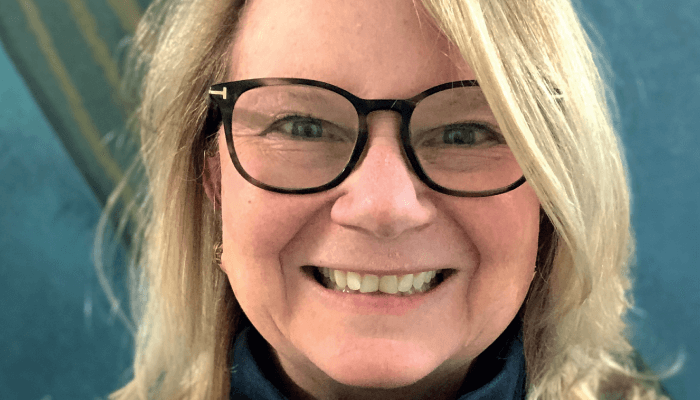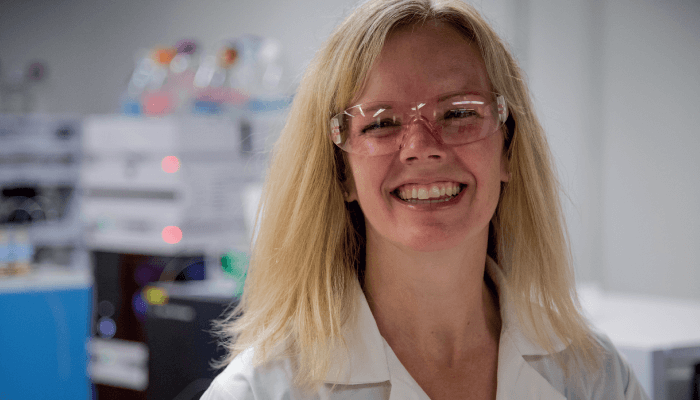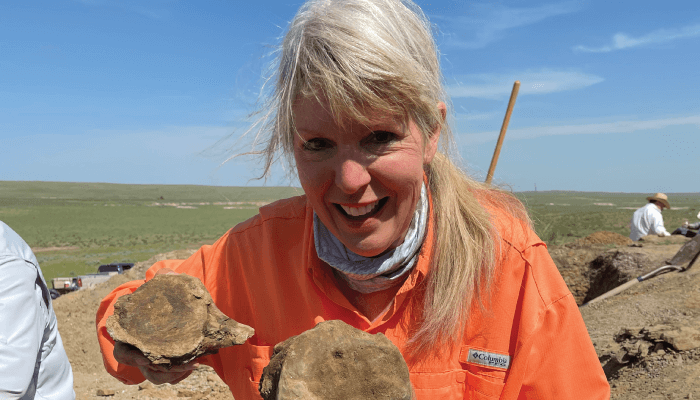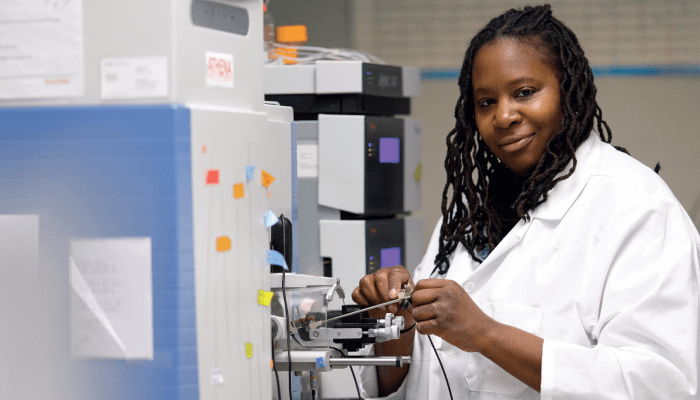Jennifer van Eyk: I’d have to say our Biomek i7 automated workstation from Beckman Coulter. This workstation allowed us to fully automate our MS workflows from sample denaturation, reduction, and alkylation, to digestion and desalting using a 96-well plate. This completely transformed our lab and enabled us to carry out population-based workflow.

Guowang Xu: Absolutely – though not a specific instrument as such; I could not have lived without chromatography coupled to mass spectrometry. In our research on metabolomics and lipidomics, we have developed a series of new methods and devices for the separation and analysis of complex samples based on one- or multi-dimensional chromatography-MS, which greatly improves the peak capacity of an analytical system. Our lab has developed leading platforms for metabolomics analysis, which includes GC-MS, LC-MS, and CE-MS systems. The first of these were pseudo-targeted GC-MS and LC-MS metabolomics methods – the former having been published in Nature Protocols – and they’ve proved very helpful in realizing the high coverage and accurate analysis of large-scale samples. We’ve also developed an LC-MSn metabolomics database for large-scale structure identification and other clinical applications.
It's through the use of the above platforms that our group has been able to study metabolic disease and metabolic reprogramming of cancer, identifying more than 10 different kinds of metabolic markers related to liver cancer, ovarian cancer, and diabetes. The kit “serum glycocholic acid detection – LC-MS/MS” was licensed for clinical use by the Zhejiang division of the China Food and Drug Administration, further demonstrating the clinical application of MS. And by analyzing metabolic profiles in liver tissue samples from HBV-related acute-on-chronic liver failure patients, our group has been able to study the metabolic characteristics of these patients and developed a practical strategy for targeting metabolic reprogramming using trimetazidine to improve their survival. And these are just a handful of the areas where MS has been crucial in our research!

Christina Jones: My immediate thought is that the work that I have done throughout the entirety of my career would not have been possible without high-resolution mass spectrometers. Their sensitivity is unmatched, and the technology is steadily improving. I can’t single out a specific instrument because – based on my experience – I know that I can do numerous types of analyses on any HR-MS. My graduate school advisor once told me that we (his students) were spoiled because, for the most part, our experiences were with high-resolution instrumentation; I must say that I realized he was completely right when I graduated and moved on to my next position!

Claire Eyers: Much of our current proteomics work relies on the Thermo Orbitrap Tribrid series of instruments. We still make good use of the ‘workhorse’ Q Exactive instruments from Thermo, but the flexibility and the additional fragmentation capabilities of the Tribrid – particularly electron-mediated dissociation – has been really important for improving the site localization of covalent post-translational protein modifications, which is so essential for our work.

Erin Baker: I definitely could not have lived without an ion mobility spectrometry-mass spectrometry platform. Seeing both structure and mass measurements simultaneously has opened my eyes to so many new molecules and has really helped us determine confidence in our identifications.

Susan Richardson: Yes, absolutely! The Waters Autospec high resolution magnetic sector GC-MS instrument that I used for many years at the US EPA was key to identifying most of the new disinfection by-products (DBPs) in drinking water. I could not have lived without it. It was great because I could tune it to do ultra-sensitive low resolution-MS experiments (to pick up trace levels of DBPs in drinking water) and then tune it to high resolution to get the accurate masses to generate molecular formulas and identify unknowns.

Richard Smith: For me, this is clearly an ion mobility-mass spectrometer. Admittedly, I may be a bit biased as I have been involved with the development of several forms of IMS-MS over the last two decades, starting with “classical” drift tube IMS, field asymmetric IMS (FAIMS), and currently IMS in Structures for Lossless Ion Manipulations (SLIM). IMS separations are inherently fast, and IMS-MS platforms can be exquisitely sensitive. Add to this the high resolving power for better separations that can distinguish and help identify isomers, and you have an incredibly powerful and broadly applicable platform.

Lisa Jones: Mass spectrometers in general have been very important in my career. When I moved into the field of mass spectrometry as a postdoc, it opened the door for me to study larger proteins and more complex systems. I was especially interested in determining how much structural information could be obtained from highly complex systems. Orbitrap-based mass spectrometers were particularly impactful in this area of my research – the high resolution and mass accuracy were beneficial for the types of experiments I was carrying out. I started my first independent faculty position shortly after the Q-Exactive Orbitrap series was released. Thankfully, as a new faculty member, these instruments were more cost effective than the previous generation Orbitraps, and the footprint of the instrument was suitable for my lab space. The purchase of that instrument was a big boon to my research program.





